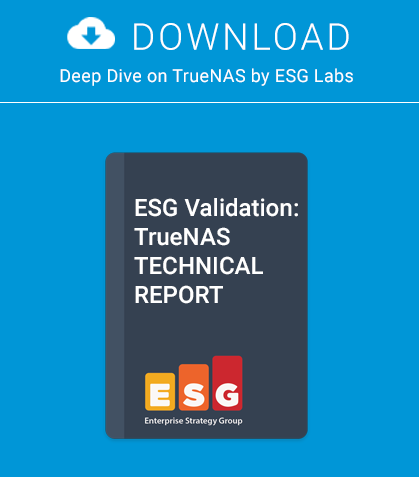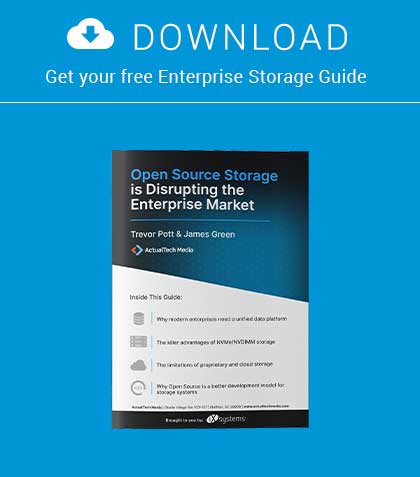The world has changed and a business must face the eruption of data from “The Internet of Things”, BYOD, social media, and Big Data. Many businesses must be agile and flexible yet do more with less. The storage market is large yet dominated by a handful of legacy vendors that may not be agile or flexible.
NetApp and EMC may dominate, but their flagship products use a decades old architecture. TrueNAS was designed from the ground up and uses modular, scale-out hardware and intelligent software. It has better economics, provides a better user experience, lowers storage deployment risk, and is more agile in scaling capacity and performance than legacy storage vendors.
I’m often asked by customers why they should use TrueNAS. I give them 5 reasons:
1). Expanding a legacy storage configuration can be a complex, costly, risky and time consuming process. You need expensive flash or disk storage and an expert resource for the network and storage configuration. TrueNAS is flexible, easy to configure, supports any protocol, and works over the Ethernet networks that all customers have. Expanding TrueNAS is a simple matter of plugging it in and letting TrueNAS do the rest.
2). TrueNAS helps you get more done. The appearance of a logon screen controls when a user can start working. TrueNAS delivers this faster, so a user can start working sooner. Additionally, the time needed to access documents is important. Using TrueNAS, you will get near instant access to your office documents. Finally, using TrueNAS lets you search emails faster.
3). Many legacy vendors do not have in-line compression or deduplication, but rely on post processing to optimize data. This method does not reduce storage cost and can affect application performance. TrueNAS has in-line storage optimization that reduces cost without affecting application performance.
4). Legacy vendors increase the risk of data loss when they require that data be migrated when you upgrade firmware or move between array models. With TrueNAS you can perform non-disruptive firmware upgrades and move between hybrid array models without needing to backup your data. We’ve also found that other vendors don’t scale as large as TrueNAS, can’t guarantee data integrity, or waste storage capacity when protecting the disk. Most RAID implementations don’t scale for today’s multi-TB disk drives, don’t protect the data, and require significant overhead. TrueNAS uses RAID-Z and ZFS, which supports today’s large disks and guarantees data integrity.
5. Your solution must have High Availability and Disaster Recovery. To ensure high availability, some vendors require that you purchase an additional controller, increasing the rack space for your solution. For disaster recovery, other vendors require that you purchase optional software components for local or remote data protection. TrueNAS supports HA without increasing rack space and comes with protection built in.
As you think about the reasons why you need storage, be sure to consider TrueNAS as a viable storage option!
Gary Archer
Director of Storage Product Marketing



